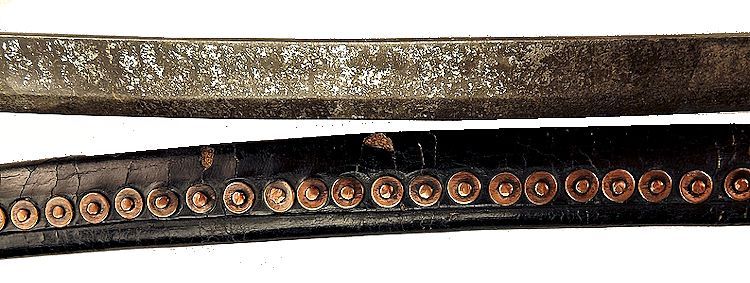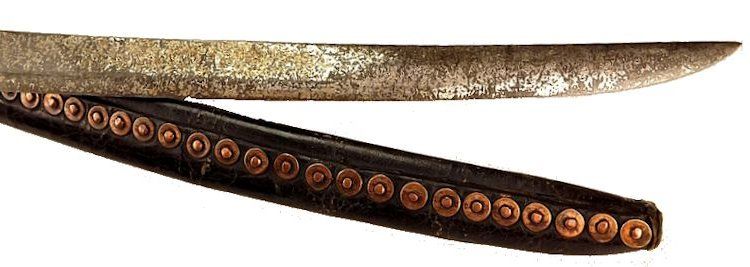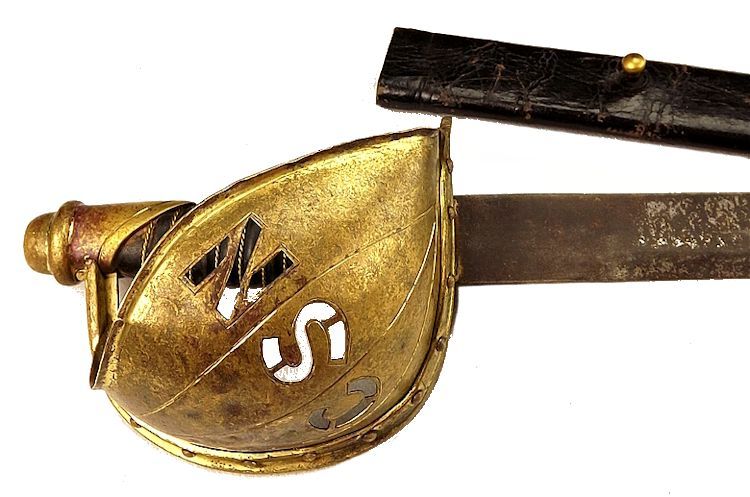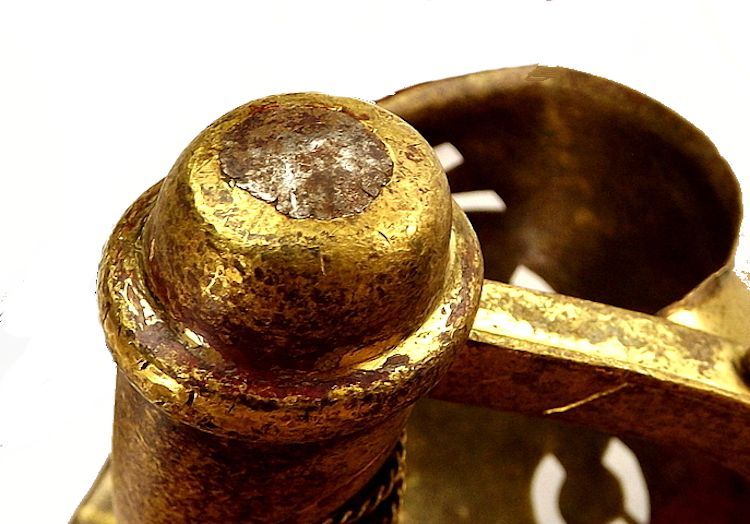Civil War Officer’s Cutlass
With Scabbard & Throg!


5 Star Condition
DIMENSIONS: Cutlass
32″ long overall. 26″ blade length Max width of blade 1″
Max thickness 1/4″ Fuller 3/4″ W x 15 1/2″ L Weight 2 lbs 12
oz. in scabbard
Presented
is a Civil War, M1860, dated 1862, cutlass with incised 1″ x 3/8″ “CSN” lettering on the
guard that stands for Confederate States Navy. It is an unusual variation of the mainstay cutlass used by the Union
Navy from 1860 into the 20th Century. The weapon has its original scabbard with throg. There are other examples of this style
cutlass appearing on the internet, but there is no known documentation that it was made by Ames.

The
condition of the scabbard is excellent with some minor surface loss and cracking, but there are no breaks or deep cracks.
There are 55 copper rivets running down the back. The knuckle bow has a flange which accepts an elliptical brass
cup which acts as a hand guard. The curved guard is riveted to the flange and forms a solid half basket guard.
The guard, grip, leather covering, and wire wrap are near perfect. The blade has a mottled grey finish interspersed
with areas of polished nickel.
|
CONDITION:
|
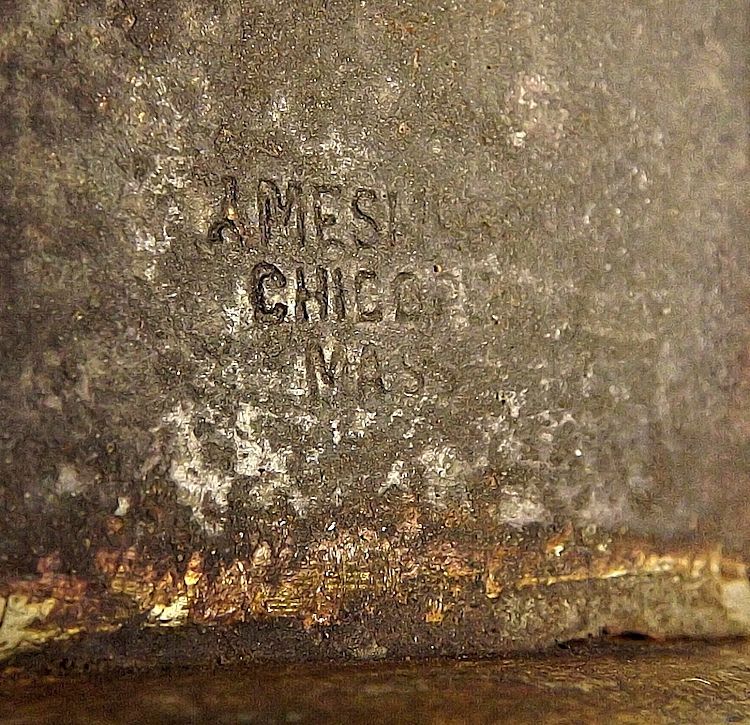
|
|
Maker’s stamp over inspector’s stamp and date
|
MARKINGS:
All are sharp and distinct. On the obverse is the Ames Mfg Co. with Chicopee, Mass on three
lines. On the reverse there is the inspector’s initials over the 1862 date on the ricasso. There are
no other markings.
From
1832 by James Tyler Ames and his brother, Nathan Peabody Ames. The company manufactured small tools, cotton machinery, swords, cannons, and did casting of bells. They started production of military contract swords in 1832 with the M1832 foot artillery sword, and ended with the M1906 cavalry saber in 1906. Ames produced more swords for the American military than any other company before or since, totaling over 200,000 swords in service by the end of the Civil War. In that time, at least ten different manufacturing marks were used on the swords. A little knowledge of the company history helps place a date range for when each stamp was used. When the company started producing swords it was led by Nathan P. Ames, and most marks reflected that fact. In 1847, Nathan died and left the company to his brother James. The markings on the blades were immediately changed from N.P. Ames to Ames Mfg. Co. In 1848, the town of Cabotville was incorporated into Chicopee, Massachusetts, and the marks were once again changed to reflect this. Blades dated as late as 1850 may still bear the Cabotville stamp, as the old dies were probably used until they were worn out. In a much reduced state, they are still in business today. |

